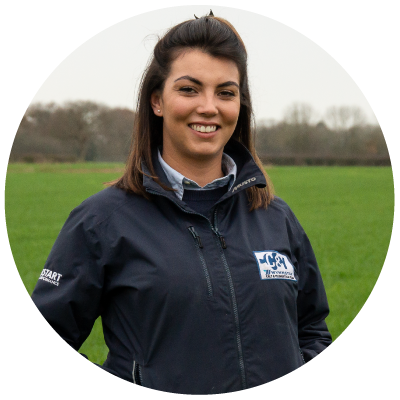Finishing time contributes to the profitability and sustainability of the UK beef market. As an industry, we should be utilising cattle efficiencies and look to get them finished quicker as they become poorer at feed conversion.
Read more: Targets for Beef Calves on a Semi Extensive System
Lets look at the AHDB data
Due to different finishing systems, overall age averages will vary. From UK slaughter data you cannot split bulls and steers, but data shows the first increased spike of slaughter numbers at 15 months, this would be intensive bull beef. The majority of slaughter data show steers from 22 – 24 months. The next spike in AHDB data shows 29 months, indicating a push before price penalisation over thirty months. Heifers follow a similar trend with the majority at 22-23 months, a spike before 30 months but far less slaughtered at 15 months.
Carcass classification
The EUROP grid is used to classify carcasses based on conformation and fat class. There are two grids used by the UK abattoirs. Firstly, the traditional grid, has 56 different carcass classifications. The confirmation is assessed from E to P. E being a convex, shapely carcass, R being an average shape profile and P being a plainer profile. U, O and P are subdivided to give a high (+) or a low (-) classification. Fat is graded from 1 – 5, 1 being very lean and 5 being very fat. Fat classes 4 and 5 are also subdivided into low (L) and high (H).
Secondly, there is the 15-point grid, which is an enhanced traditional grid and each conformation and fat class is subdivided into three: low (-). Medium (=) and high (+) classes. This grids has a total of 225 potential classifications. Abattoirs using video image analysis (VIA) technology will be assessed against the 15-point grid, the grid gives more accurate grading and can influence financial benefits for the supply chain.
What is killing out percentage?
The killing out % (KO%) determines how much saleable carcass weight is obtained from the live animal. It is expressed as the weight of the carcass in relation to the weight before slaughter. The target should be 50% for dairy beef and 60% for suckler beef. KO % can be affected by gut fill, with grazed cattle often having lower KO% compared to animals fed an energy-dense diet.
Meat quality pre slaughter
Breed and sex will have an impact on growth rates and carcass size. Breed will also contribute towards eating quality due to intramuscular fat. Diet can influence meat in various ways, including appearance, aroma, fat level and colour. Energy intake is first directed to skeletal growth, then lean muscle. Once bone and muscle are formed the animal will then stores energy as fat. Excess fat requires six times the energy to deposit lean meat, which is detrimental to returns. A fat class of 3 is said to provide good eating quality.
Meat quality post slaughter
Following slaughter, the supply of blood to the muscle ceases and any remaining energy is used up. Muscle proteins begin to bind during a process called rigor mortis. The pH of living tissue is around 7, when an animal dies, the energy is used up and causes the pH to fall around 5.4-5.7. If an animal is stressed prior to slaughter, the energy is used through adrenaline response, this is turn means the pH does not fall. If the pH does not fall it can impact meat quality (DFD) dark, firm, dry or (DCB) dark










